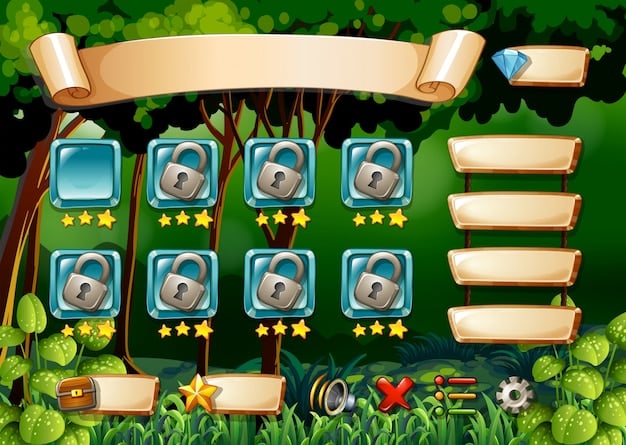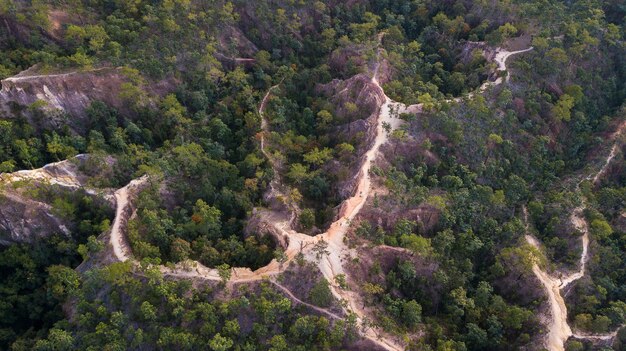Wild Rift Pro Teams: Adapting to Minion Gold Reduction in Latest Patch

Wild Rift pro teams are adapting to the latest patch changes that significantly reduced gold earned from minions by adjusting their early game strategies, prioritizing objective control, and refining team compositions to compensate for the decreased income and maintain a competitive edge.
The latest patch in Wild Rift has brought significant changes to the game, particularly concerning the amount of gold players earn from minions. This shift has had a noticeable impact on professional teams, forcing them to rethink their strategies and adapt to the new economic landscape. Let’s delve into how these teams are adjusting.
Understanding the Minion Gold Reduction in Wild Rift
The recent patch introduced a significant alteration by reducing the amount of gold obtained from minions. This change wasn’t just a minor tweak; instead, it fundamentally altered the pacing of the game, especially in the early stages. This adjustment requires pros to adapt quickly and efficiently for successful gameplay.
Minion gold is a primary source of income for players, particularly in the early game. Reducing this income means players have less gold available to purchase essential items, which consequently affects their power spikes and overall effectiveness in battles. This shift forces players to be more strategic with their resources and rely more on teamwork and skill.
Impact on Early Game Strategy
The reduced minion gold has significantly impacted early game strategies.
- Lane Dominance: Teams now focus more on securing early lane dominance to gain a gold advantage through kills and objective control.
- Jungle Influence: Junglers play a crucial role in ganking and assisting lanes, which can help snowball advantages despite the reduced gold income.
- Objective Control: Securing early objectives like dragons and Rift Herald becomes even more critical, as these provide additional gold and buffs to compensate for the minion gold reduction.
Professional teams are meticulously analyzing the new dynamics, adjusting their initial item builds, and refining their lane control techniques to optimize their gold acquisition. The early game is now less about passively farming and more about actively creating opportunities to gain an advantage.

How Pro Teams Are Adjusting Their Farming Patterns
Farming patterns have undergone a significant transformation as pro teams seek to maximize their gold income amidst the reduced minion gold. Adjustments to these patterns are aimed at making every last hit count while efficiently managing resources. Effective farming now requires more precision and strategic planning.
Professional players are now more acutely aware of alternative sources of gold, such as jungle camps, neutral objectives, and enemy champions. Efficiently distributing farming responsibilities among team members and coordinating rotations to maximize gold collection are now essential skills.
Prioritizing Last Hits
Last hitting has always been important, but it’s now crucial to secure every last hit.
- Perfect Execution: Mastering the timing of last hits is critical to ensure no gold is wasted.
- Lane Freezing: Freezing the lane near the tower allows for safer farming and denies the enemy gold and experience.
- Wave Management: Understanding how to manipulate minion waves to create favorable farming conditions is becoming a key skill for laners.
Effective farming strategies now include a blend of proactive and reactive techniques, emphasizing the need for adaptable gameplay. These adjustments reflect the evolving demands of the game where efficiency and resourcefulness are rewarded.

The Role of Junglers in the New Economy
Junglers have always been pivotal in Wild Rift, but the minion gold reduction amplifies their importance. Their capacity to influence lanes, secure objectives, and manage jungle resources is more crucial than ever. This enhanced importance places additional responsibilities on junglers to elevate their level of impact.
Their decisions impact the entire team’s gold flow. Efficient jungle pathing, timely ganks, and objective control are essential for compensating for the reduced minion income. Junglers must now balance their farming with supporting their lanes, ensuring that gold is funneled to key players.
Effective Jungle Strategies
Junglers are adapting with new strategies to maximize gold efficiency.
- Early Ganks: Successful early ganks can provide laners with kills and assists, helping them snowball despite the reduced minion gold.
- Objective Focus: Securing dragons, Rift Herald, and jungle buffs provides additional gold and advantages for the team.
- Counter-Jungling: Disrupting the enemy jungler’s farm and stealing their camps can further increase the gold disparity.
These adaptations allow junglers to remain impactful while adjusting strategy to take advantage of new opportunities. The effectiveness of these strategies relies greatly on the jungler’s ability to adapt and lead their team to victory.
Objective Control: A New Priority
With reduced minion gold, securing objectives has become even more critical for professional teams. Objectives like dragons, Rift Herald, and towers provide substantial gold and strategic advantages that can offset the lower gold income from minions. Teams are now prioritizing these objectives to maintain a competitive edge.
Controlling these objectives allows teams to influence the game’s tempo and economy significantly. Securing dragons can provide powerful buffs, while Rift Herald can help push lanes and take down towers. These advantages compound over time, making objective control a cornerstone of winning strategies.
Strategies for Objective Control
Teams are employing various strategies to secure and control objectives.
- Vision Control: Establishing vision around objectives denies the enemy information and allows for safer objective takes.
- Team Coordination: Coordinating rotations and team fights around objectives ensures that the team has the numbers advantage.
- Early Pressure: Applying early pressure in lanes can force the enemy team to react, creating opportunities to sneak objectives.
These techniques rely on meticulous planning and collaborative execution. Professional teams understand that a coordinated approach to objective control can transform a game, providing the resources necessary to overcome the challenges posed by decreased gold income.
Adapting Team Compositions
The shift in gold income dynamics has led to changes in team compositions. Pro teams are experimenting with different champion picks that thrive in a lower-gold environment. Certain champions excel at making impactful plays with fewer resources, while others can effectively scale into the late game even with a slower start.
These adjustments require a thorough understanding of each champion’s strengths and weaknesses, along with the ability to draft compositions that synergize well. The value of champions who can quickly secure objectives and provide utility to the team is increasing.
Champion Picks in the New Meta
Certain champion picks are gaining popularity due to their effectiveness in the current meta.
- Utility Supports: Supports who provide vision, crowd control, and engage effectively with limited gold are highly valued.
- Early Game Fighters: Champions who can snowball early leads through kills and objective control are being prioritized.
- Scaling Carries: Carries who can farm efficiently and scale well into the late game, even with reduced gold income, remain viable.
Professional teams are continuously evaluating and refining their champion pools to adapt to the evolving meta. These dynamics highlight the strategic depth of Wild Rift and the constant need for innovation in team compositions to remain competitive.
The Psychological Impact on Players
The minion gold reduction not only requires strategic adjustments but also has a psychological impact on players. Adjusting to less gold income requires a shift in mindset. Less gold can lead to increased stress and pressure, particularly in high-stakes matches. Managing these psychological aspects is critical for maintaining peak performance.
Players must learn to remain calm and focused, even when facing economic disadvantages. Effective communication, trust in teammates, and a resilient attitude are vital for overcoming these challenges and maintaining a winning mentality.
Maintaining a Positive Mindset
Strategies for maintaining a positive mindset include:
- Focusing on Fundamentals: Solid fundamentals, such as good positioning and efficient farming, remain crucial regardless of gold income.
- Positive Communication: Encouraging and supportive communication among teammates can boost morale and reduce stress.
- Adaptability: Being willing to adjust strategies and adapt to unforeseen circumstances helps maintain a positive attitude.
By addressing the psychological impact of the gold reduction, professional teams can ensure that their players remain confident and perform at their best, even under pressure. Addressing these psychological factors leads to an overall winning dynamic.
Future Strategies and Predictions
Looking ahead, professional teams will continue refining their strategies and approaches to adapt to the minion gold reduction. The meta is constantly evolving, and new strategies are likely to emerge as teams explore different compositions and playstyles. Adaptability and innovation will be key to staying ahead in the competitive scene.
Predicting the future of Wild Rift is challenging, but certain trends are likely to continue. Objective control, efficient farming, and strategic team compositions will remain core elements of successful gameplay.
Potential Future Developments
Potential future developments may include:
- Increased Reliance on Team Fights: Team fights around objectives may become even more crucial as teams look to secure gold and advantages.
- Innovative Champion Picks: New and unexpected champion picks may emerge as teams experiment with different strategies.
- More Aggressive Playstyles: Teams may adopt more aggressive playstyles to secure early leads and deny the enemy gold.
Ultimately, the teams that can best adapt to these changes and innovate will be the ones that succeed in the long run. Innovation and flexibility will continue to shape the game’s directions.
| Key Aspect | Brief Description |
|---|---|
| 💰 Minion Gold Reduction | Reduced gold from minions impacts early game economy. |
| 🎯 Objective Control | Securing dragons and towers becomes more crucial. |
| 🦸 Team Compositions | Adapting champion picks for a low-gold environment. |
| 🧠 Psychological Impact | Maintaining focus and adapting to economic disadvantages. |
Frequently Asked Questions
▼
The reduction in minion gold forces teams to focus more on early lane dominance and securing objectives to compensate for the lower income.
▼
Objectives like dragons and towers provide crucial gold and strategic advantages, helping teams overcome the reduced gold from minions.
▼
Junglers are focusing on early ganks, objective control, and counter-jungling to maximize their impact on the game’s economy.
▼
Utility supports, early game fighters, and scaling carries are gaining popularity due to their effectiveness in the current environment.
▼
Focus on fundamentals, maintain positive communication, and remain adaptable to adjust to unforeseen challenges and maintain team morale.
Conclusion
Adapting to the minion gold reduction in Wild Rift requires professional teams to rethink their strategies, prioritize objective control, and refine their team compositions. The changes also highlight the importance of the psychological impact on players, forcing them to make key decisions with less gold. As the meta evolves, those that innovate and adapt will stay ahead.





